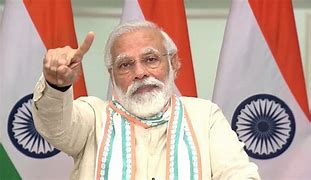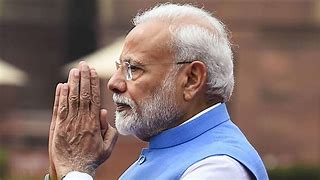Feature
Demonetisation makes Hiroshima, Nagasaki of Indian economy: Shiv Sena
 Mumbai: In a vitriolic attack, the Shiv Sena on Wednesday compared the fallout of demonetisation on the Indian economy with the disaster wreaked by the atom bombs dropped on Hiroshima and Nagasaki in 1945. “By dropping the ‘atom bomb of demonetisation’, Prime Minister Narendra Modi has reduced the Indian economy to Hiroshima and Nagasaki. ‘All are dead’,” the Sena said in an edit in party mouthpieces Saamana and Dopahar Ka Saamana.
Mumbai: In a vitriolic attack, the Shiv Sena on Wednesday compared the fallout of demonetisation on the Indian economy with the disaster wreaked by the atom bombs dropped on Hiroshima and Nagasaki in 1945. “By dropping the ‘atom bomb of demonetisation’, Prime Minister Narendra Modi has reduced the Indian economy to Hiroshima and Nagasaki. ‘All are dead’,” the Sena said in an edit in party mouthpieces Saamana and Dopahar Ka Saamana.
Accusing Modi of “not heeding anybody”, the Sena said the Prime Minister did not listen to the advice of even the Reserve Bank of India (RBI) before spiking Rs 500 and 1,000 notes on November 8 last year. “Just like the deaf-and-dumb parrots sitting in his Cabinet, (Urjit Patel) was appointed the RBI Governor and the country’s economy has been reduced to shambles,” the Sena noted.
The party led by Uddhav Thackeray is an ally of the ruling Bharatiya Janata Party in the Centre and Maharashtra. Recalling Modi’s recent statement in Baramati (Pune) that he seeks advice from the elder statesman, Nationalist Congress Party President Sharad Pawar, the Sena countered saying even he (Pawar) is now strongly critical of the move. Initially, Pawar backed demonetisation but gradually he has become very critical of the move as it has struck the country’s masses, poor farmers and the economy.
“Pawar is saying that ‘initially it appeared that demonetisation was good, but it failed to bring out the black money’. This is because the ‘black money’ is stashed abroad and hence could not be brought out,” the edit reasoned. However, it was the Indian economy and the rural cooperative economy which bore the brunt of the notes spike, including state and district cooperative banks and financial institutions or even the sugar cooperatives.
“The farmers depended on district and rural cooperative banking sector for carrying out their daily trade in agriculture produce and depositing their incomes. But demonetisation has declared it (their incomes) as ‘black money’ as the state and district banks were barred from exchanging old Rs 500 and 1,000 notes,” the edit pointed out. It ruled that the government spread canards terming these cooperative banks as the “hotbed of corruption”, which is an insult to the entire cooperative sector. “The fact is that people like Vijay Mallya committed scams in the nationalised banks, not in the cooperatives. How many times we must scream this at the government?” the Sena asked.
“If Modi is truly taking Pawar’s advice, then Pawar must have definitely advised him not to perform the funeral of the farmers by labelling cooperative banks as corrupt, since the cooperative sector is the soul of the Maharashtra economy,” said the edit. Even Pawar has acknowledged that over two months post-demonetisation, the Indian economy continues to be in tatters, the edit said.
“At least 50 per cent industries have been hit hard, 35 per cent employment has been affected, unemployment has shot up especially in rural areas and nobody is bothered about the common masses whose backbone has been crushed,” it added. The edit cited a recent Assocham study saying over four million people have lost their jobs so far and the situation will worsen in the coming days. “The people are completely demoralised by the move and we are very concerned about the country’s future. So we are expressing our deepest anguish,” the edit concluded.
Entertainment
Meghalaya Reserves Legalized Gambling and Sports Betting for Tourists

The State Scores Extra High on Gaming-Friendly Industry Index
Meghalaya scored 92.85 out of 100 possible points in a Gaming Industry Index and proved to be India’s most gaming-friendly state following its recent profound legislation changes over the field allowing land-based and online gaming, including games of chance, under a licensing regime.
The index by the UK India Business Council (UKIBC) uses a scale of 0 to 100 to measure the level of legalisation on gambling and betting achieved by a state based on the scores over a set of seven different games – lottery, horse racing, betting on sports, poker, rummy, casino and fantasy sports
Starting from February last year, Meghalaya became the third state in India’s northeast to legalise gambling and betting after Sikkim and Nagaland. After consultations with the UKIBC, the state proceeded with the adoption of the Meghalaya Regulation of Gaming Act, 2021 and the nullification of the Meghalaya Prevention of Gambling Act, 1970. Subsequently in December, the Meghalaya Regulation of Gaming Rules, 2021 were notified and came into force.
All for the Tourists
The move to legalise and license various forms of offline and online betting and gambling in Meghalaya is aimed at boosting tourism and creating jobs, and altogether raising taxation revenues for the northeastern state. At the same time, the opportunities to bet and gamble legally will be reserved only for tourists and visitors.
“We came out with a Gaming Act and subsequently framed the Regulation of Gaming Rules, 2021. The government will accordingly issue licenses to operate games of skill and chance, both online and offline,” said James P. K. Sangma, Meghalaya State Law and Taxation Minister speaking in the capital city of Shillong. “But the legalized gambling and gaming will only be for tourists and not residents of Meghalaya,” he continued.
To be allowed to play, tourists and people visiting the state for work or business purposes will have to prove their non-resident status by presenting appropriate documents, in a process similar to a bank KYC (Know Your Customer) procedure.
Meghalaya Reaches Out to a Vast Market
With 140 millions of people in India estimated to bet regularly on sports, and a total of 370 million desi bettors around prominent sporting events, as per data from one of the latest reports by Esse N Videri, Meghalaya is set to reach out and take a piece of a vast market.
Estimates on the financial value of India’s sports betting market, combined across all types of offline channels and online sports and cricket predictions and betting platforms, speak about amounts between $130 and $150 billion (roughly between ₹9.7 and ₹11.5 lakh crore).
Andhra Pradesh, Telangana and Delhi are shown to deliver the highest number of bettors and Meghalaya can count on substantial tourists flow from their betting circles. The sports betting communities of Karnataka, Maharashtra, Uttar Pradesh and Haryana are also not to be underestimated.
Among the sports, cricket is most popular, registering 68 percent of the total bet count analyzed by Esse N Videri. Football takes second position with 11 percent of the bets, followed by betting on FIFA at 7 percent and on eCricket at 5 percent. The last position in the Top 5 of popular sports for betting in India is taken by tennis with 3 percent of the bet count.
Local Citizens will Still have Their Teer Betting
Meghalaya residents will still be permitted to participate in teer betting over arrow-shooting results. Teer is a traditional method of gambling, somewhat similar to a lottery draw, and held under the rules of the Meghalaya Regulation of the Game of Arrow Shooting and the Sale of Teer Tickets Act, 2018.
Teer includes bettors wagering on the number of arrows that reach the target which is placed about 50 meters away from a team of 20 archers positioned in a semicircle.
The archers shoot volleys of arrows at the target for ten minutes, and players place their bets choosing a number between 0 and 99 trying to guess the last two digits of the number of arrows that successfully pierce the target.
If, for example, the number of hits is 256, anyone who has bet on 56 wins an amount eight times bigger than their wager.























